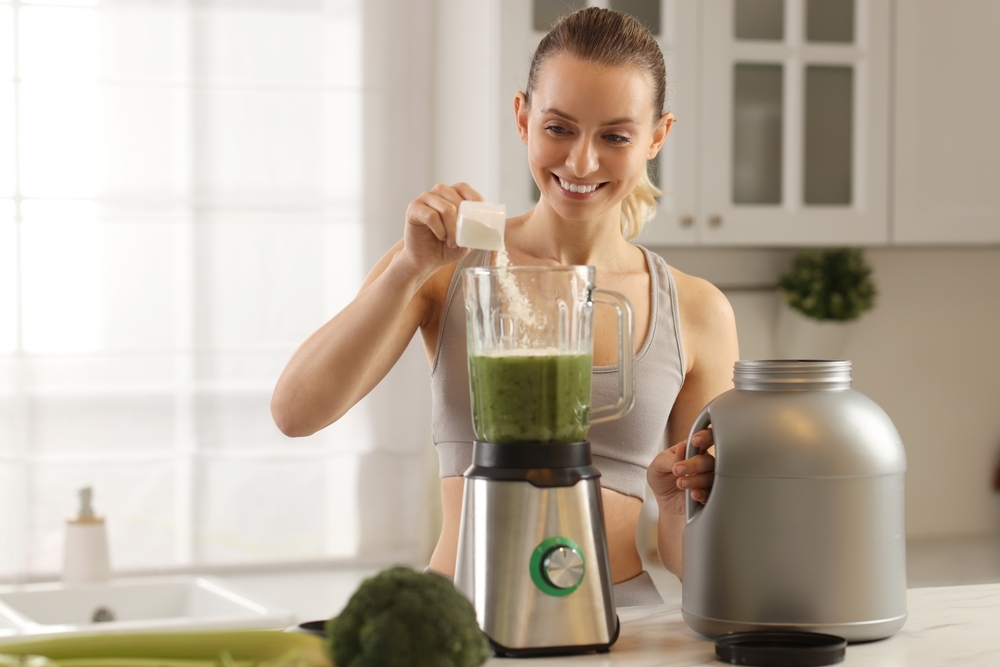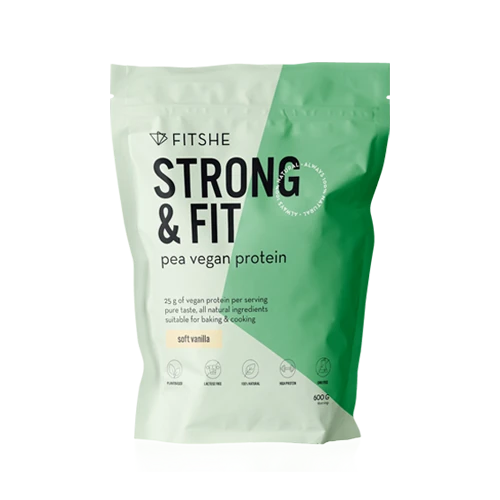Plant-based protein sources are a high-quality alternative to animal proteins and provide athletes with everything they need for muscle growth and recovery. They contain essential amino acids, are rich in fiber and antioxidants, and contribute to better digestion and sustainable nutrition. From legumes and quinoa to nuts and hemp seeds – there are countless plant-based options that can effectively support your body. In this article, you’ll discover the best plant-based protein sources and how to use them effectively for maximum sports performance.
Why Choose Plant-Based Protein Sources for Athletes?
Plant-based proteins offer several advantages compared to animal-based proteins:
- Easily digestible: Plant-based foods contain less saturated fat and are often easier to digest.
- High in fiber: Supports healthy digestion and provides long-lasting energy.
- Sustainable: Plant-based protein sources have a lower environmental footprint.
- Rich in antioxidants: Helps reduce inflammation and promotes recovery.
A common myth is that plant-based proteins do not contain sufficient amino acids. While some plant-based sources have a less complete amino acid profile than animal proteins, this can easily be resolved by combining different sources.
Top 10 Plant-Based Protein Sources for Athletes
1. Legumes (Lentils, Chickpeas, Black Beans, Kidney Beans)
Legumes are an excellent source of protein and fiber, which contribute to muscle growth and stable blood sugar levels. They also contain iron, magnesium, and B vitamins, which are essential for energy production and muscle recovery. Additionally, legumes contain slow-digesting carbohydrates, providing long-lasting satiety and steady energy levels throughout the day.
- How to use: Legumes can be added to soups, salads, and stews or blended into hummus or dips. By combining different legumes, you can gain a broader range of nutrients.
2. Tofu, Tempeh, and Edamame
These soy products contain all essential amino acids and are rich in iron and calcium. Tofu and tempeh are versatile and absorb flavors from spices and marinades easily, making them perfect for savory dishes. Edamame, young soybeans, are a great snack and a natural source of plant-based protein.
- How to use: Stir-fry tofu with vegetables, use tempeh as a meat substitute in sandwiches, or eat edamame as a high-protein snack. Tofu can also be grilled or baked for a firmer texture in dishes.
3. Quinoa
Quinoa is unique because it has a complete amino acid profile and is an excellent source of plant-based protein. It also contains fiber and minerals like magnesium and phosphorus, which help with muscle relaxation and bone health. Additionally, quinoa is gluten-free, making it a great option for those with gluten intolerance.
- How to use: Use quinoa as a base for meals, in salads, or as a nutritious breakfast with fruit and nuts. It can also replace rice or pasta.
4. Chia Seeds & Flaxseeds
These tiny seeds are packed with protein, omega-3 fatty acids, and fiber. They absorb liquid and form a gel-like substance, which is beneficial for digestion and hydration. Flaxseeds also contain lignans, which may support hormonal balance and heart health.
- How to use: Add them to smoothies, overnight oats, or yogurt, or make chia pudding. Flaxseeds are best consumed ground to maximize nutrient absorption.
5. Hemp Seeds
Hemp seeds contain high-quality protein with all essential amino acids and are also a great source of healthy fats, including omega-3 and omega-6. These nutrients help reduce inflammation and support heart and muscle health.
- How to use: Sprinkle hemp seeds over salads, mix them into breakfast cereals, or blend them into smoothies. They are also delicious in homemade energy bars or savory dishes.
6. Nuts and Nut Butters (Almonds, Cashews, Walnuts, Peanut Butter)
Nuts not only provide protein but also healthy fats, vitamins, and antioxidants. They aid in muscle recovery and provide long-lasting energy. Walnuts, for example, are high in omega-3, which is beneficial for brain function.
- How to use: Eat a handful of nuts as a snack, spread nut butter on toast, or use nuts as a topping in meals. Be mindful of portion sizes, as nuts are calorie-dense.
7. Sunflower Seeds and Pumpkin Seeds
These seeds are an excellent source of protein and magnesium, which contribute to muscle recovery and nerve function. They also contain zinc, which supports the immune system and wound healing.
- How to use: Mix them into salads, granola, or eat them as a snack. You can also roast them for extra flavor and crunch.
8. Whole Grains (Oats, Brown Rice, Whole Wheat Bread, and Pasta)
Whole grains provide protein alongside complex carbohydrates, which offer sustained energy and help maintain stable blood sugar levels. They also contain B vitamins that aid in energy metabolism.
- How to use: Use them as a base for meals or breakfast, such as oatmeal or whole-grain pasta. Oats can also be used in energy bars or smoothies.
9. Leafy Green Vegetables (Spinach, Kale, Broccoli)
Although vegetables contain less protein per serving than other sources, they are still valuable due to their micronutrients and fiber. Spinach and kale also provide calcium and iron, essential for bone health and oxygen transport in the blood.
- How to use: Add them to smoothies, salads, or stir-fries. Broccoli can also be steamed or roasted for extra flavor.
10. Plant-Based Protein Powders (Pea Protein, Rice Protein, Hemp Protein, Soy Protein)
For athletes who need a quick protein boost, plant-based protein powders are a convenient option. They help with muscle recovery and are often fortified with vitamins and minerals.
- How to use: Mix them into shakes, add them to oatmeal, or use them in baking. Some protein powders can also be incorporated into protein bars or savory dishes.
How Much Plant-Based Protein Do Athletes Need?
Your daily protein requirements depend on your body weight and activity level:
- General athlete: 0.8 – 2.2 grams of protein per kg of body weight.
- Strength training or intensive sports: 1.6 – 2.4 grams per kg of body weight.
Since plant-based proteins sometimes have lower bioavailability than animal proteins, it’s recommended to consume slightly more and vary protein sources. This helps maintain a complete amino acid profile and ensures your body maximally utilizes proteins for muscle recovery and growth. Combining protein-rich foods, such as legumes with grains, helps create a well-balanced diet.


